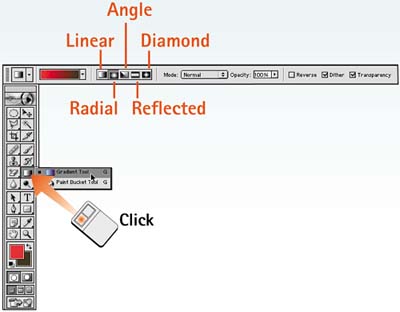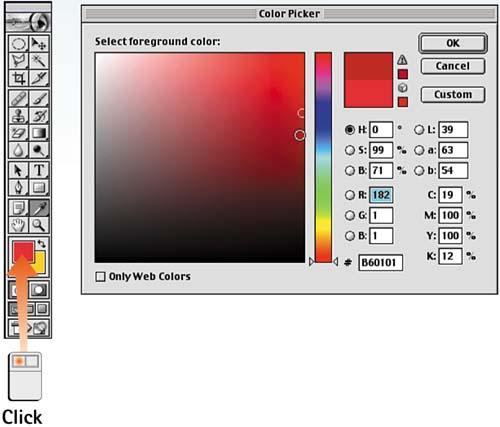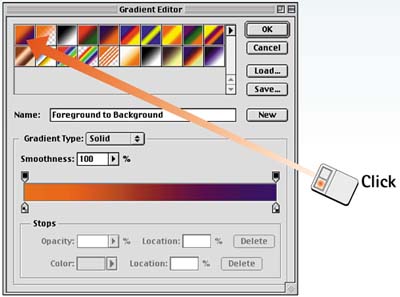| A gradient is a fill that gradually blends two or more colors together. These color blends can be applied in circular-shaped, diamond-shaped, and cone-shaped gradients, as well as standard linear and bar shapes. When you apply a gradient, it expands to fill the entire selected area. Gradients are useful as background fills behind an object and in layer masks to fade out an image (see Part 11, Task 7 for details on layer masks). Select the Fill Area Open the image file with which you want to work. If necessary, select the area to be filled with the gradient. If no area is selected, Photoshop fills the entire image with the gradient effect. 
Select Gradient Type Select the Gradient tool from the toolbox. If it is not visible, click and hold the Paint Bucket tool and select the Gradient tool from the pop-out menu. In the Options bar, select the Linear, Radial, Angle, Reflected, or Diamond Gradient tool. 
Set Foreground/Background Colors The colors in the gradient will be applied using the foreground and background colors specified in this step. In the toolbox, click the Foreground and Background color swatches and select the desired gradient colors from the Color Picker dialog box that appears. 
Set the Gradient Colors In the Options bar, click the gradient swatch (the first icon) to open the Gradient Editor dialog box. Click to select the first swatch in the palette. The gradient sample displayed will now reflect the colors you selected in Step 3. Click OK to close the dialog box. 
Set Options In the Options bar for the Gradient tool, set the Opacity slider as desired, choosing a setting of less than 100 to create a transparent gradient. If you want, you can also select a different gradient type by clicking one of the icons in the bar. Leave the Transparency check box disabled and enable the Dither check box if you want to reduce banding in the gradient. Finally, enable the Reverse check box if you want to switch the colors in the gradient. 
Apply the Effect Position the cursor in the image where you want the gradient to start. Click and drag, releasing the mouse to apply the effect. Remember that the gradient will cover the entire image; the point at which you release the mouse determines the end of the gradient transition from the foreground color to the background color you selected. 
How-To Hints Applying Gradients in Their Own Layers For full flexibility, apply gradients in their own layers. Doing so allows you to go back and adjust transparency, blending modes, and positioning as needed. You can also use layer masks to control the visibility of the gradient. Tweaking a Gradient If you are not satisfied with the angle or tone break, drag again to reapply the gradient, overwriting the previous attempt. This works only if the Mode option in the Options bar is set to Normal and if the Opacity slider is set to 100. |
|





